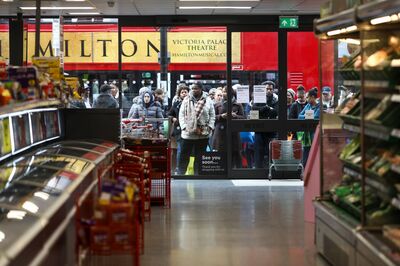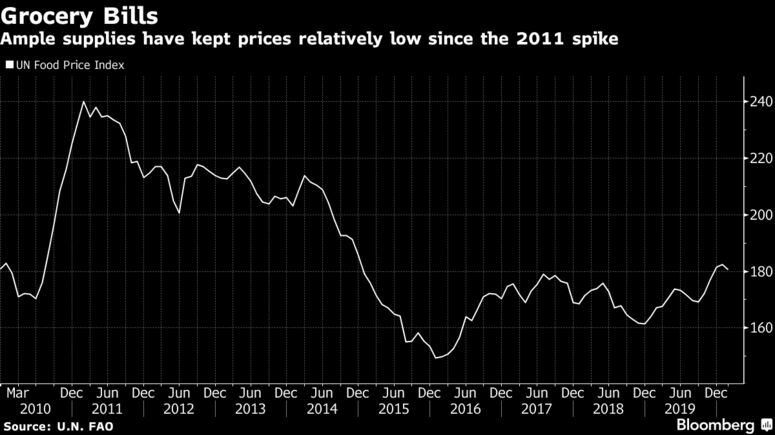http://triplecrisis.com/economic-crisis-was-foreshadowed-before-the-coronavirus/
By Alejandro Nadal
Republished from La Jornada, March 11, 2020, with permission.
It is with great sadness that we announce that Alejandro Nadal, an economist, lawyer, professor at the Centro de Estudios Económicos (CEE) of the Colegio de México, and a longtime contributor to Triple Crisis blog, passed away on March 17 after a short time with fast-moving cancer. As former D&S co-editor and former Triple Crisis administrator Timothy A. Wise put it, "A great loss for us all, far too young and otherwise healthy and vibrant. Like Frank Ackerman. Tough times, just when we need those clear, critical minds most." This article was his last for the Mexico City daily newspaper La Jornada, where he was a columnist. It was submitted on March 10 and published on March 11, just six days before he died. Even though he wrote it almost two weeks ago and the news is moving so quickly, it still seems to capture powerfully the current moment and the economic context of the pandemic. The journal Sin Permiso, on whose editorial board Nadal served, has posted an obituary and tribute here, and has made available a pdf compiling some of his articles. —Eds.
Cycles and crises in capitalism can happen in an irregular way. This is part of the anomalous movement of an economy that is inherently unstable. The great crisis of 2008 was the result of such processes. And to bring an economy that has fallen into imbalance back to life, you need to inject it with liquidity in good quantities. For example, the monetary easing policy measures implemented by the Federal Reserve were felt before the crisis and their speculative effects began to spread throughout the economy from 2009–2010. Astronomical amounts went into the pension funds and treasury departments of large corporations, where they served to fuel global speculation. But what they did not do was promote investment and employment.
The recovery process has been widely publicized, but the reality is that if by recovery we mean a more or less prolonged period of growth, then that has manifested itself. But, on the other hand, if that growth has been very slow and job creation has been weak, then the recovery can be characterized as a long recession. Even before this major recession broke out, it was clear that quantitative easing schemes in monetary policy were not working to promote the real economy. All they had achieved was to promote share buybacks, carry trades, in which large corporations took speculation to all ends of the earth, in territories where lower yields prevailed.
Faced with this picture of fragility, with a lazy U.S. economy creating poor-quality jobs, a reluctant Europe and the Chinese and Indian economies falling into recession, the specter of a trade war with all its implications, very marked imbalances in the entire world economy and the specter of a global crisis, is becoming clearer.
And in the face of the widespread threat of a recession looming over the world economy, things are getting confused. And the first thing that needs to be clearly observed is the prospect of a crisis that is intensifying. The new coronavirus encourages people to stay home and avoid travel, cutting demand for air travel and hotel services significantly. Production cuts in China and elsewhere have disrupted value chains. This process, in turn, has triggered a steady stream of alarm warnings about how the now infamous virus will affect the rest of the economy.
For the U.S. economy, the longer the pandemic lasts and the more intense the efforts to counteract it—although for the moment the situation remains very uncertain because so many places are affected and so many people have been harmed—the severity of the situation has not been able to be accurately assessed.
For an economy that was already in a state of semi-stagnation, the situation has become very complicated. To begin with, with China everything depends on the speed with which the global epidemic can be brought under control, the prospects for curbing it and the process of massive restrictions and quarantines never before seen. That country is suffering its first economic contraction since 1971 and the consequences will be felt throughout the global economy. If these procedures do not work, recession will be inevitable.
Several analysts predict falls of 2% and even 3% in the world's GDP if the recession is declared and extended further. But let no one be fooled in this context. The tremors that have been predicted have been present for months and the remedies that were supposedly designed to ease the pain have intensified them. The contradictions of capitalism have been felt since the crisis of 2008 and the remedies do not signify that we have overcome these problems. In any case, those most vulnerable to the crisis of the pandemic remain the poorest and most exploited by the capitalist system. Under capitalism, this will continue to be the history and the fate of the exploited of the earth.
Translated with www.DeepL.com/Translator (free version).
Alejandro Nadal was a professor at the Centro de Estudios Económicos (CEE) of the Colegio de México
-- via my feedly newsfeed






